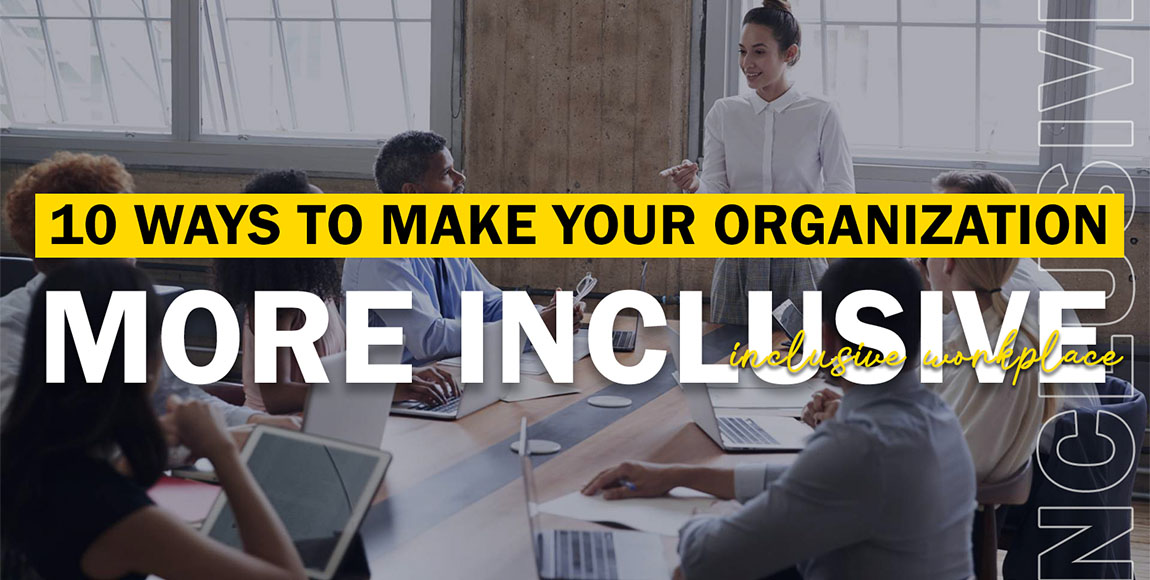
The Ultimate Guide for Leaders and Employees: 10 Ways to Help Your Organization Be More Inclusive
Inclusion is not just a buzzword; it is a fundamental aspect of building a successful and thriving organization. When leaders and employees at all levels actively work towards creating an inclusive environment, it fosters diversity, innovation, and higher employee engagement. In this guide, we will explore key strategies and practices to help your organization be more inclusive.
1. Develop an Inclusive Leadership Mindset
It starts with leaders who champion inclusion and set the tone for the entire organization. Leaders should educate themselves about unconscious bias, diversity, and inclusion. Encourage leaders to reflect on their own biases and work towards creating a safe and inclusive space where all voices are valued and heard.
2. Foster a Culture of Belonging
An inclusive organization is one where employees feel a sense of belonging, regardless of their background or identity. Leaders and employees should actively build a culture that promotes respect, empathy, and understanding. Encourage open communication, listen to diverse perspectives, and create opportunities for collaboration and team-building across different groups.
3. Implement Inclusive Hiring Practices
Building a diverse workforce starts with inclusive hiring practices. Review your recruitment processes to ensure they attract a wide range of candidates. Establish diverse interview panels to mitigate bias and consider implementing blind resume screenings. Focus on skills, qualifications, and potential rather than pedigree or personal connections.
4. Provide Diversity and Inclusion Training
Education and training are crucial to creating an inclusive environment. Offer regular workshops, seminars, and training programs that cover topics such as unconscious bias, cultural competence, and inclusive leadership. These initiatives help employees develop awareness, empathy, and the skills necessary to foster inclusivity.
5. Support Employee Resource Groups (ERGs)
ERGs are voluntary, employee-led groups that provide a platform for underrepresented individuals to connect, support one another, and contribute to the organization. Encourage the formation of ERGs and provide resources to help them thrive. Recognize their efforts and involve them in decision-making processes to promote a sense of inclusion and empowerment.
6. Address Microaggressions and Discrimination
Microaggressions are subtle forms of discrimination that can have a significant impact on individuals and the overall work environment. Create a zero-tolerance policy for discriminatory behavior and establish clear channels for reporting incidents. Act promptly to investigate and address any complaints, and provide support to those affected.
7. Offer Flexible Work Arrangements
Inclusion also means recognizing and accommodating diverse needs and circumstances. Consider providing flexible work arrangements such as remote work options, flexible schedules, and parental leave policies that support work-life balance and diversity of experiences.
8. Evaluate and Revise Policies and Procedures
Regularly assess your organization’s policies and procedures to identify any potential barriers to inclusivity. Evaluate everything from recruitment and performance management to promotion and compensation processes. Make necessary adjustments to ensure fairness and equal opportunities for all employees.
9. Measure and Monitor Progress
Set measurable diversity and inclusion goals and regularly track progress. Conduct employee surveys, focus groups, and diversity audits to gather feedback and identify areas for improvement. Use the insights gained to refine your strategies and create a more inclusive workplace.
10. Celebrate Diversity and Achievements
Finally, celebrate diversity and the accomplishments of individuals from all backgrounds. Recognize and highlight the contributions of employees from diverse groups. Encourage participation in cultural events, observances, and celebrations to promote cross-cultural understanding and appreciation.
Conclusion
Creating a truly inclusive organization is an ongoing process that requires commitment and continuous effort from leaders and employees alike. By implementing these strategies and practices, you can foster an environment where everyone feels valued, respected, and empowered to contribute their best. Embrace diversity, champion inclusion, and watch your organization thrive in ways you never imagined.